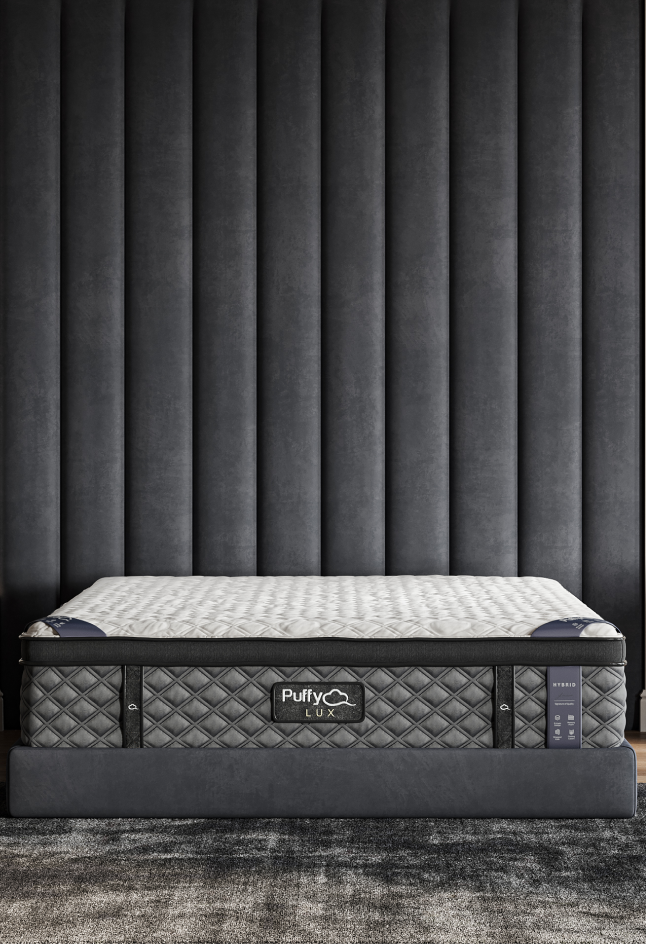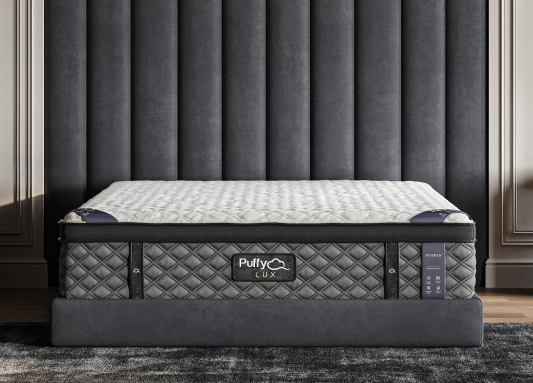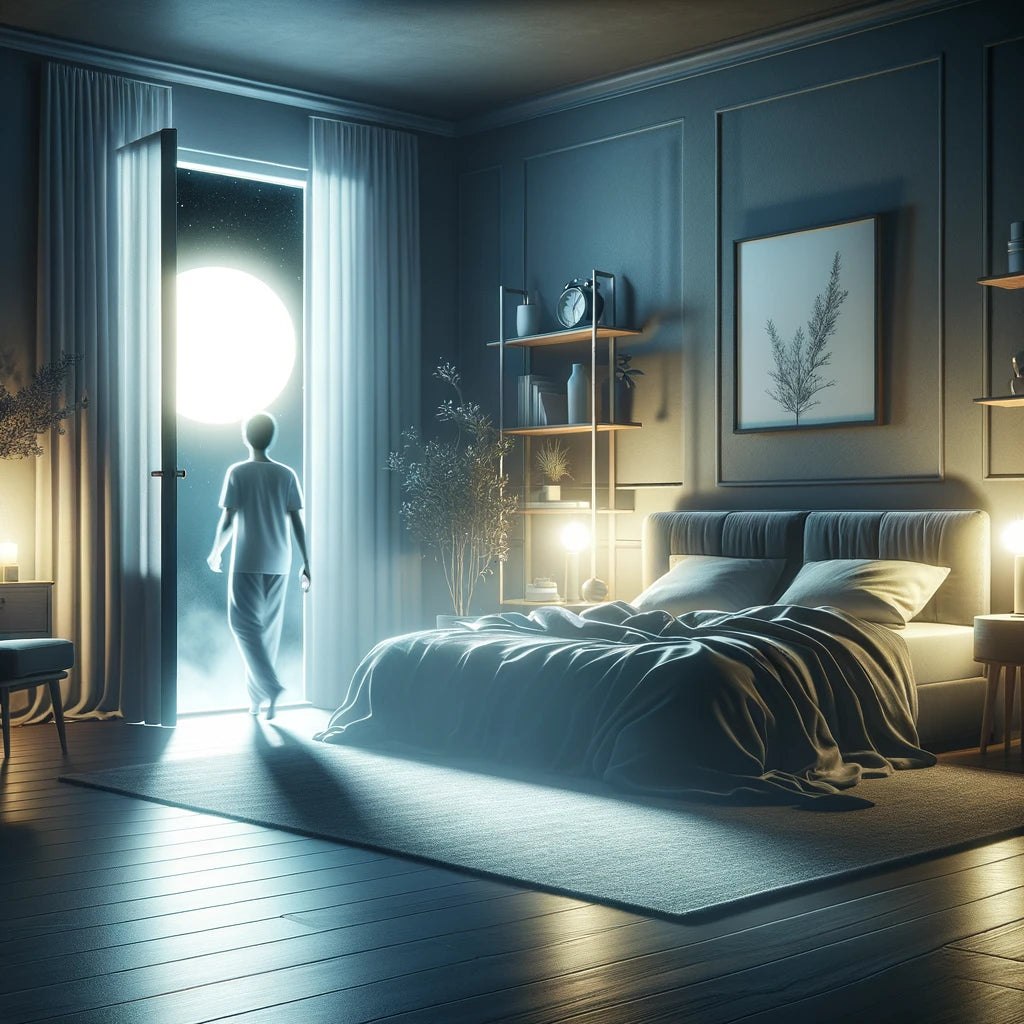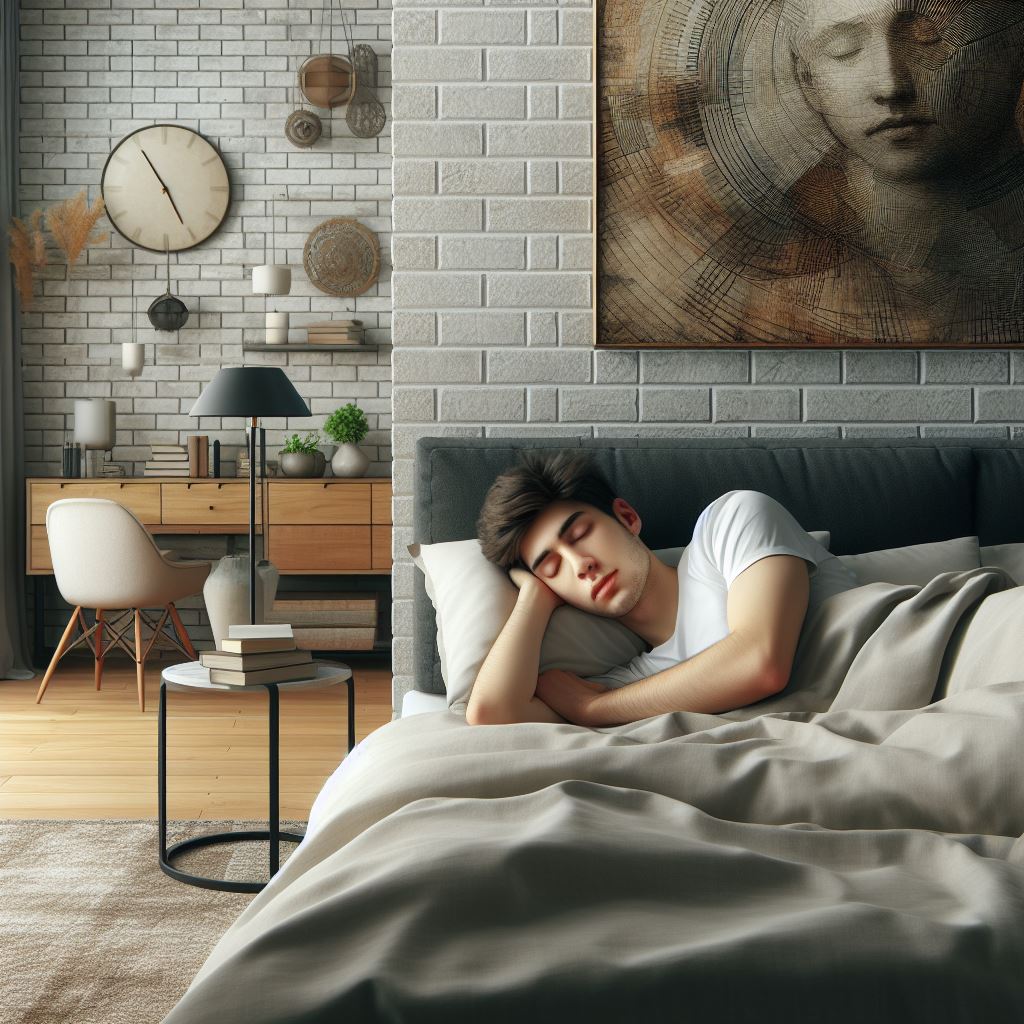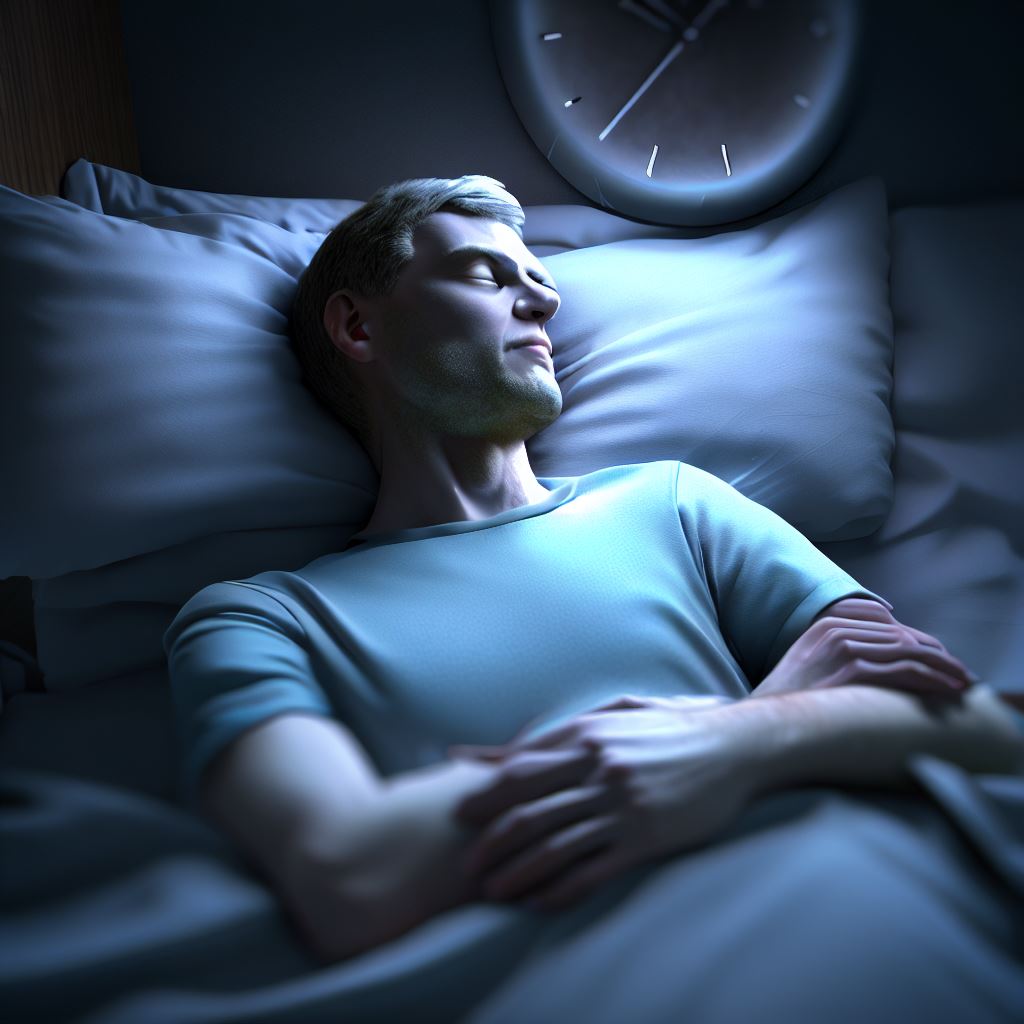Sleepwalking, also known as somnambulism, is a fascinating phenomenon that has intrigued scientists and researchers for centuries. Its history dates back to ancient times, with references to sleepwalking found in various cultures around the world.
This intriguing behavior occurs during specific stages of sleep, where individuals engage in complex actions while still asleep. Understanding the stages and episodes of sleepwalking can provide valuable insights into this enigmatic condition.
- What is Sleepwalking?
- What Stage of Sleep Does Sleepwalking Occur?
- Sleepwalking Symptoms
- What Causes Sleepwalking
- Is Sleepwalking Dangerous?
- How to Stop Sleepwalking
- What to Do When Someone is Sleepwalking and Talking
- How to Stop Sleepwalking Child
- Is Sleepwalking a Sign of Mental Illness?
- Is Sleepwalking a Sign of Trauma?
- Is Sleepwalking a Sign of Depression?
- Conclusion
What is Sleepwalking?
Sleepwalking, also known as somnambulism, is a sleep disorder that causes individuals to engage in complex behaviors while still asleep. During episodes of sleepwalking, individuals experience walking or performing activities during non-rapid eye movement (NREM) sleep, typically occurring in the first half of the night.
This phenomenon occurs when the brain fails to transition smoothly between deep sleep and waking states, leading to partial arousal and subsequent sleepwalking.
Sleepwalkers and their Experiences
Sleepwalkers are individuals who regularly experience episodes of sleepwalking. These episodes can vary in duration and intensity, ranging from a few minutes to over an hour.
Sleepwalkers may exhibit various behaviors during these episodes, such as wandering around the house, talking or mumbling, rearranging furniture, or even driving a car.
The Role of Sleep Cycles
Understanding the role of sleep cycles is essential when discussing sleep disorders like somnambulism. The human sleep cycle consists of two main stages: rapid eye movement (REM) sleep and non-REM (NREM) sleep. NREM encompasses three stages: N1 (light sleep), N2 (deepening into a more restful state), and N3 (deep or slow-wave sleep).
What Stage of Sleep Does Sleepwalking Occur?
Sleepwalking, also known as somnambulism, is a fascinating phenomenon that occurs during the deepest stage of non-rapid eye movement (NREM) sleep. Specifically, sleepwalkers experience episodes of somnambulism during the slow wave sleep (SWS) phase of their sleep cycle.
During this stage, the brain waves are characterized by slow and high-amplitude patterns, indicating a deep level of sleep. It typically occurs within the first few hours after falling asleep when individuals are in a state of deep sleep.
Sleepwalking Episodes During Deep Sleep
Sleepwalkers often engage in complex behaviors while asleep, such as walking around, talking, or even performing routine tasks like getting dressed or cooking. These actions occur without conscious awareness and can vary in duration and intensity.
The occurrence of sleepwalking can be influenced by various factors such as stress, fatigue, and sleep deprivation. For example:
-
Stress: High levels of stress can disrupt normal sleeping patterns and increase the likelihood of experiencing a sleepwalking episode.
-
Fatigue: Lack of adequate rest can impact the quality and depth of sleep, making individuals more susceptible to engaging in activities while still asleep.
-
Sleep Deprivation: Chronic lack of sufficient sleep can significantly increase the chances of experiencing episodes of somnambulism.
The Role of REM Sleep Behavior Disorder
It’s important to note that sleepwalking primarily occurs during NREM sleep stages rather than rapid eye movement (REM) sleep. REM is associated with vivid dreaming and temporary paralysis to prevent acting out dreams physically.
However, there is a similar disorder called REM Sleep Behavior Disorder (RBD), where individuals may exhibit abnormal behaviors during REM sleep due to a loss or impairment in muscle atonia.
While both conditions involve unusual behaviors during different stages of the sleep cycle, they have distinct characteristics.
Sleepwalking Symptoms
Talking Point 1: Talking, Sitting Up in Bed, and Leaving the House
During a sleepwalking episode, individuals may exhibit various symptoms beyond simply walking. It is not uncommon for sleepwalkers to engage in activities such as talking or sitting up in bed.
In some cases, they may even leave their house and wander aimlessly while still asleep. These actions can be both bewildering and potentially dangerous for the individual experiencing them.
Talking Point 2: Triggers for Sleepwalking Episodes
Several factors can increase the likelihood of experiencing a sleepwalking episode. One significant factor is sleep deprivation. When individuals do not get enough restful sleep, it can disrupt their normal sleep cycles and increase the chances of engaging in abnormal behaviors like sleepwalking.
Certain medications can also play a role in triggering sleepwalking episodes. Medications that affect the central nervous system or alter brain activity during sleep may contribute to an increased risk of somnambulism.
Talking Point 3: Sleep Disorders and Sleep Eating
Sleep disorders such as REM (rapid eye movement) behavior disorder can sometimes manifest with symptoms similar to those seen in sleepwalking episodes. REM behavior disorder involves acting out dreams during REM sleep, which typically occurs during later stages of the night’s restorative cycle.
Another related phenomenon is “sleep eating.” This condition involves consuming food while still asleep and unaware of one’s actions. Sleep eating can occur independently or alongside other forms of parasomnia like sleepwalking.
What Causes Sleepwalking
Genetic Factors
One possible cause of sleepwalking is genetic factors. Research suggests that there may be a hereditary component to this sleep disorder. If a close family member, such as a parent or sibling, has a history of sleepwalking, it increases the likelihood that an individual may experience it as well.
Sleep Deprivation
Sleep deprivation can also contribute to the occurrence of sleepwalking episodes. When individuals do not get enough restful sleep, their bodies and brains may not fully enter into the necessary stages of sleep. This disruption in the normal sleep cycle can increase the chances of experiencing somnambulism.
Medications and Medical Conditions
Certain medications and medical conditions have been linked to an increased risk of sleepwalking. Some medications used to treat psychiatric disorders, such as sedatives or hypnotics, can potentially trigger episodes of somnambulism.
Medical conditions like fever, obstructive sleep apnea, restless leg syndrome, and gastroesophageal reflux disease (GERD) have been associated with an increased likelihood of sleepwalking.
Sleep-Related Eating Disorders
In some cases, individuals who experience sleepwalking may also engage in activities such as eating while still asleep. This phenomenon is known as “sleep-related eating disorder” and involves consuming food without any recollection upon awakening. It is essential to note that this behavior can lead to potential health risks if inappropriate foods are consumed or if injuries occur during these episodes.
Is Sleepwalking Dangerous?
Sleep Eating and Health Risks
One of the activities that sleepwalkers may engage in is sleep eating. This behavior involves consuming food while still asleep, unaware of what they are doing. Sleep eating can pose significant risks to the health of sleepwalkers. They may eat inappropriate or unsafe foods, leading to potential choking hazards or ingestion of harmful substances.
Sleep Disorders and Increased Risk
Certain sleep disorders, such as REM (Rapid Eye Movement) sleep behavior disorder, can increase the likelihood of experiencing sleepwalking episodes. REM sleep behavior disorder is characterized by acting out vivid dreams during REM sleep, which typically occurs later in the sleep cycle. The disruption in normal REM sleep patterns can trigger abnormal behaviors like walking during these dream-filled stages.
Impact of Sleep Deprivation and Poor Sleep Hygiene
Sleep deprivation and poor sleep hygiene can contribute to the occurrence of sleepwalking. When individuals do not get enough restful deep N3 (non-rapid eye movement) sleep or experience fragmented periods of wakefulness throughout the night, it disrupts their natural sleeping patterns. This disruption increases the chances of experiencing parasomnias like somnambulism.
Potential Dangers During Episodes
During a sleepwalking episode, individuals are often partially awake but still in a state of deep N3 or slow-wave sleep. This means they are not fully aware or in control of their actions. As a result, they may engage in potentially dangerous behaviors without realizing it.
-
Sleepwalkers may trip over objects or fall down stairs due to impaired coordination.
-
They could inadvertently leave their homes and wander outside, exposing themselves to various hazards.
How to Stop Sleepwalking
Establish a Consistent Sleep Schedule
Maintaining a regular sleep schedule is crucial in managing sleepwalking episodes. By going to bed and waking up at the same time every day, you can regulate your sleep cycle and improve the overall quality of your sleep. This consistency helps your body establish a pattern of restfulness, reducing the likelihood of disruptive behaviors like sleepwalking.
Create a Relaxing Bedtime Routine
Developing a relaxing bedtime routine can significantly contribute to better sleep hygiene and minimize the occurrence of sleepwalking. Engaging in calming activities before bed, such as reading a book or taking a warm bath, signals to your body that it’s time to wind down and prepare for restful slumber. Avoid stimulating activities or screens close to bedtime, as they can interfere with your ability to fall asleep peacefully.
Ensure a Comfortable Sleeping Environment
Your sleeping environment plays an essential role in promoting quality sleep and preventing sleep disturbances like sleepwalking. Make sure your bedroom is quiet, dark, and at a comfortable temperature. Consider using blackout curtains, earplugs, or white noise machines if necessary. Ensure that your mattress and pillows provide adequate support for optimal comfort during the night.
Avoid Stimulants Before Bedtime
To prevent disruptions in your sleep cycle and reduce the risk of experiencing episodes of sleepwalking, it’s important to avoid consuming stimulants close to bedtime. Caffeine-containing beverages like coffee or energy drinks should be avoided several hours before you plan on sleeping. Similarly, refrain from consuming alcohol or heavy meals late at night as they can interfere with deep REM (rapid eye movement) sleep.
Consult with a Healthcare Professional
If you experience frequent or severe episodes of sleepwalking, it may be beneficial to consult with a healthcare professional who specializes in sleep medicine. They can provide further evaluation and guidance tailored specifically to your situation. A specialist may recommend additional interventions such as medication or therapy techniques aimed at managing underlying causes or triggers for your particular case of sleepwalking.
What to Do When Someone is Sleepwalking and Talking
Sleepwalking and talking can occur during the deep sleep stage of the sleep cycle. It is important to avoid waking someone who is sleepwalking or talking, as it may cause confusion or disorientation.
Sleepwalkers Engaging in Complex Behaviors
During a sleepwalking episode, sleepwalkers may engage in activities such as sleep eating or other complex behaviors. This can be concerning for both the person experiencing it and those around them. It is crucial to ensure their safety during these episodes.
-
Keep the environment safe: Remove any potential hazards that could cause injury, such as sharp objects or obstacles in their path.
-
Secure windows and doors: Sleepwalkers may attempt to leave the house while still asleep. Make sure all windows and doors are securely locked to prevent any accidents.
-
Install alarms: Consider installing alarms or sensors that can alert you if the person leaves their bedroom or enters potentially dangerous areas of the house.
Seeking Professional Evaluation
If someone experiences frequent episodes of sleepwalking and talking, it is advisable to consult a sleep medicine specialist for evaluation and treatment. They can provide a comprehensive assessment of the individual’s sleep patterns and determine if there are underlying causes contributing to these episodes.
-
Consulting a sleep medicine specialist: A specialist will conduct a thorough evaluation, which may include reviewing medical history, conducting a physical examination, and possibly ordering additional tests like a polysomnography (sleep study).
-
Treatment options: Depending on the diagnosis, treatment options may include improving overall sleep hygiene, managing stress levels, implementing relaxation techniques before bedtime, using medications under medical supervision (in some cases), or addressing any underlying medical conditions contributing to these episodes.
Check out Puffy mattress reviews from real customers and see how we compare with other brands.
How to Stop Sleepwalking Child
Effective Sleep Hygiene Practices
Implementing effective sleep hygiene practices is key to stopping sleepwalking episodes in children. Establishing a consistent bedtime routine helps regulate their sleep patterns and reduces the likelihood of sleepwalking. Ensure that your child goes to bed at the same time every night and wakes up at the same time each morning, even on weekends.
Encourage relaxation techniques before bedtime, such as reading a book or taking a warm bath. Create a calm and comfortable environment in their bedroom, free from distractions or stimulating activities. Dim the lights and maintain a cool temperature conducive to quality sleep.
Avoiding Sleep Deprivation
Sleep deprivation can trigger sleepwalking episodes in children. Make sure your child gets enough restful sleep by enforcing age-appropriate bedtimes and limiting activities that may interfere with their sleep schedule, such as excessive screen time or late-night stimulation.
Avoid allowing your child to become overtired during the day, as this can disrupt their natural sleep cycle and increase the chances of sleepwalking at night. Encourage regular naps for younger children and ensure they have adequate downtime throughout the day.
Seeking Medical Advice
If your child’s sleepwalking persists despite implementing good sleep hygiene practices, it may be beneficial to seek medical advice from a sleep medicine specialist. They can provide valuable insights into managing and treating sleepwalking in children.
A thorough evaluation will help identify any underlying causes or contributing factors to your child’s sleepwalking episodes. The specialist may recommend further tests or monitoring during overnight stays at a specialized center for accurate diagnosis.
Treatment options for managing childhood sleepwalking can include:
-
Medications: In some cases, medication may be prescribed to help regulate your child’s sleeping patterns and reduce the frequency of sleepwalking episodes.
-
Cognitive-Behavioral Therapy (CBT): CBT techniques can help identify triggers for sleepwalking and teach strategies for preventing or interrupting episodes.
Is Sleepwalking a Sign of Mental Illness?
Despite its perplexing nature, it is crucial to recognize that sleepwalking does not automatically signify mental illness or psychological instability. Instead, it is typically brought on by a combination of various factors and underlying conditions.
It is important to note that while sleepwalking itself may not be indicative of mental illness, it can still pose certain risks and challenges. Sleepwalkers are vulnerable to injuries due to their impaired judgment and lack of awareness during episodes.
Therefore, it is crucial for individuals who experience frequent or dangerous episodes of sleepwalking to seek medical advice and implement safety measures in their sleeping environment.
Is Sleepwalking a Sign of Trauma?
Although the precise cause of sleepwalking remains uncertain, numerous studies conducted by sleep experts and researchers have shed light on potential factors that may contribute to this perplexing phenomenon. One prevailing theory suggests that trauma, whether physical or psychological, can serve as a catalyst for sleepwalking episodes in certain individuals.
While the exact cause of sleepwalking remains elusive, research suggests that trauma can act as a triggering factor for this peculiar behavior. Understanding the complex interplay between trauma and sleepwalking can help healthcare professionals provide appropriate interventions and support for those affected by this condition.
Is Sleepwalking a Sign of Depression?
While sleepwalking is not directly considered a symptom of depression, research suggests that there might be an underlying link between the two conditions.
It is important to note that while there may be a correlation between sleepwalking and depression, it does not imply causation. Sleepwalking can occur independently of any underlying mental health condition and may simply be a result of genetic predisposition or other factors such as medication use or alcohol consumption.
If you or someone you know experiences frequent episodes of sleepwalking or shows signs of depression, it is advisable to seek professional help. A healthcare provider or mental health professional can conduct a thorough evaluation, provide appropriate treatment options, and help manage any underlying conditions that
Conclusion
In conclusion, sleepwalking is a fascinating phenomenon that occurs during the non-REM stage of sleep. It is characterized by complex behaviors performed while asleep, such as walking, talking, or even cooking. Sleepwalking can be caused by various factors, including genetics, sleep deprivation, and certain medications. While it may seem harmless in most cases, there are potential dangers associated with sleepwalking, such as injuries or accidents.
Use our store locator to find the closest furniture or mattress store near you and feel the cloudlike comfort of our Puffy Mattress in person.
If you or someone you know experiences sleepwalking episodes frequently or if it poses a risk to their safety, it is important to seek medical advice. Consulting with a healthcare professional can help determine the underlying cause and provide appropriate treatment options. Implementing preventive measures like maintaining a regular sleep schedule and creating a safe sleeping environment can significantly reduce the occurrence of sleepwalking episodes.

$1,350 in savings
Unlock your ultimate sleep solution with Puffy.
Explore our award-winning Puffy mattress collection with these extra luxury benefits:
- Award-winning comfort.
- Lifetime warranty.
- 101-night sleep trial.
- Free shipping and returns.
- 100% made in USA.
